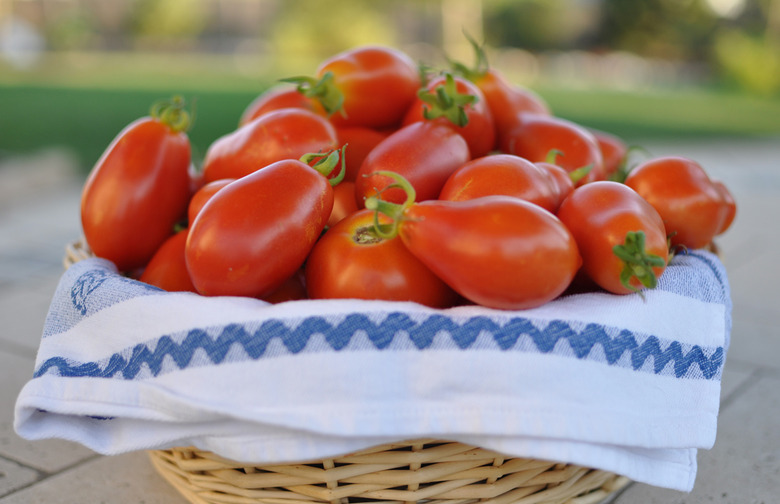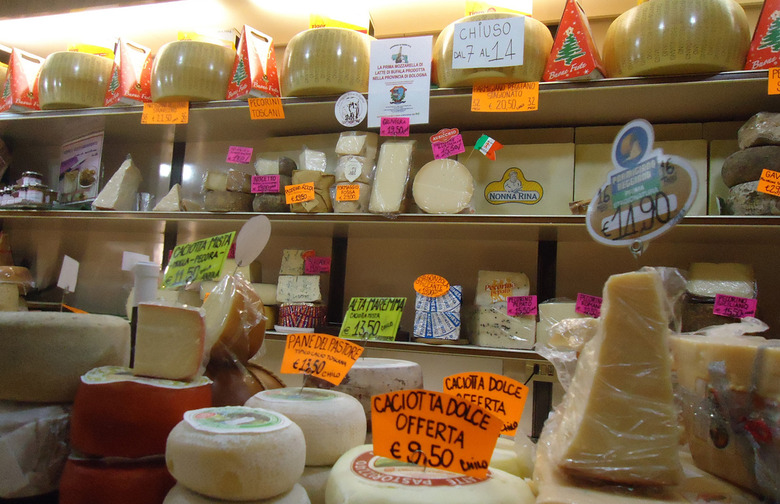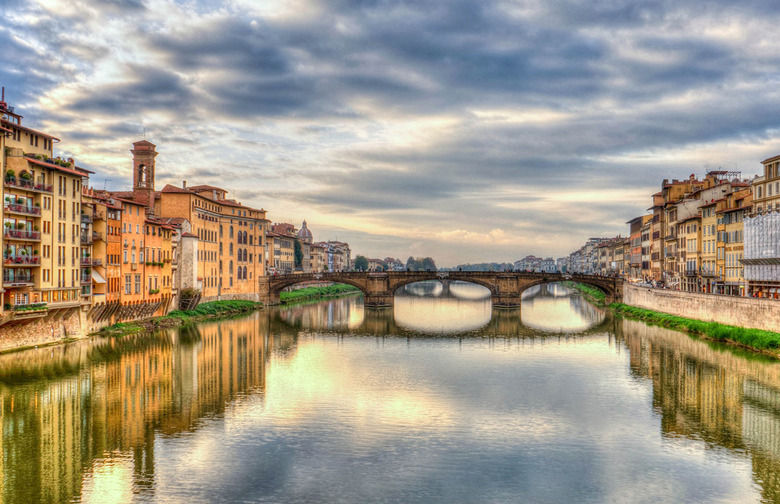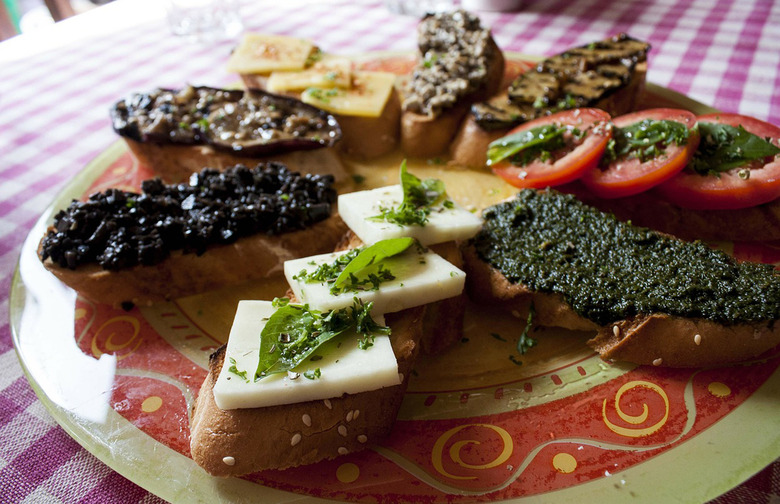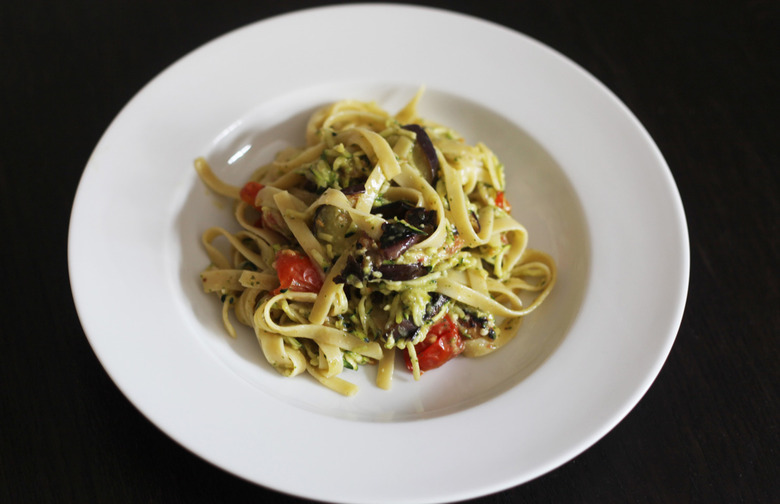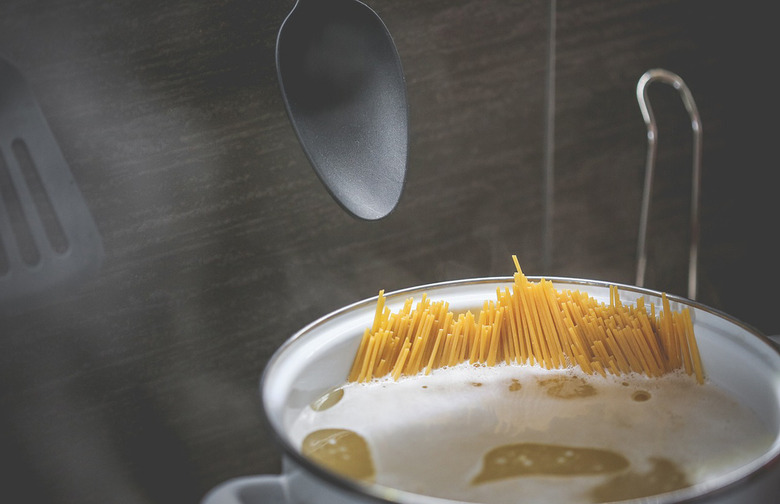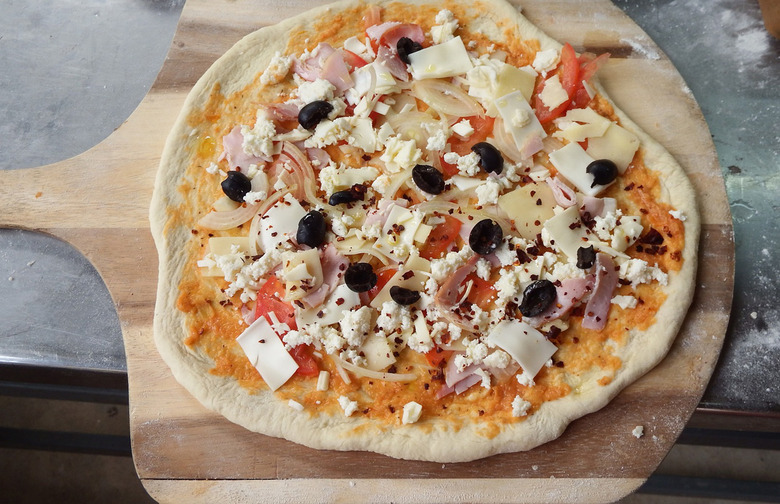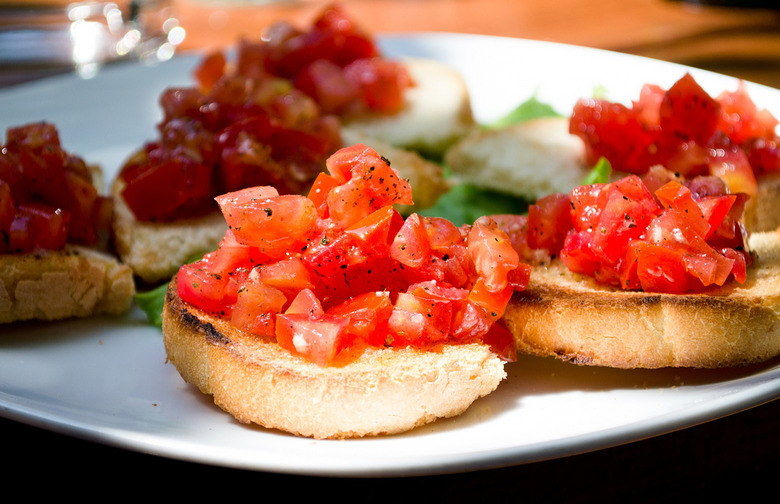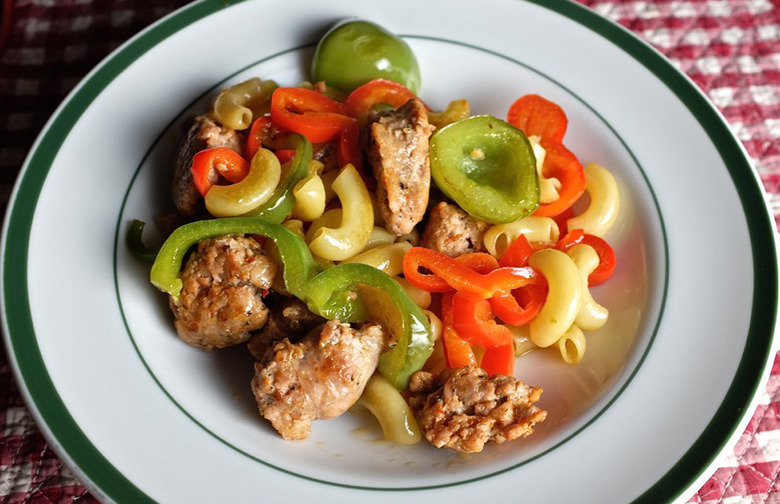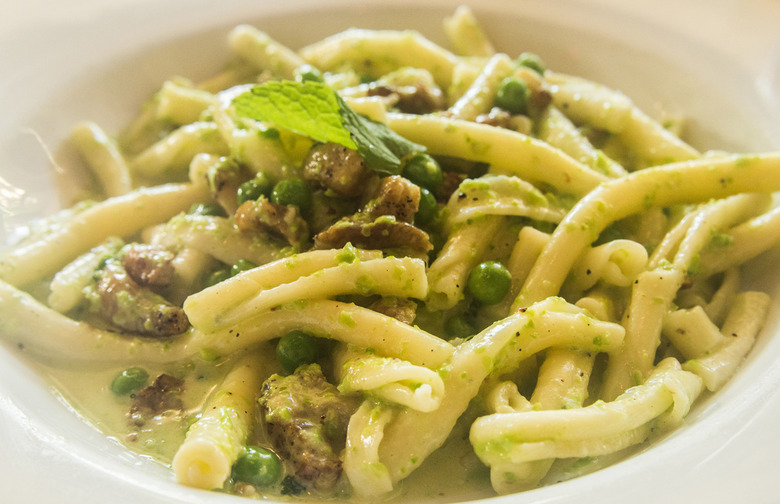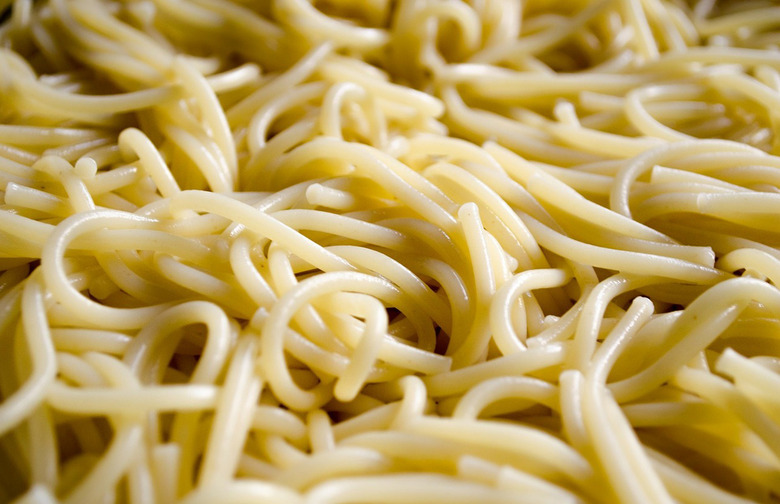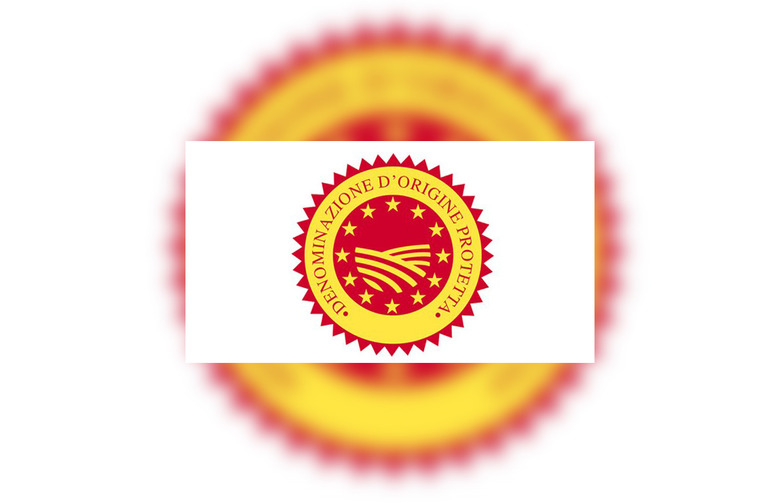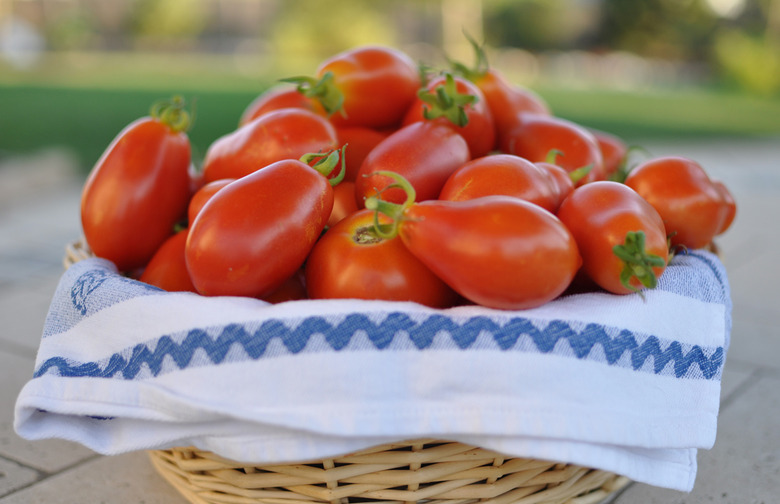Slideshow: 13 Things You Probably Didn't Know About Real Italian Food
Americans are smitten with Italian food. Without pizza, fettuccini Alfredo, garlic bread, spaghetti with meatballs, and a long list of other classic Italian-American favorites, a large percentage of kids and teenagers, and — let's be honest — adults would have little to eat.
Yet, ask an Italian expat about any of these dishes and you will get a blank stare of incomprehension. The truth is, none of these dishes are authentic Italian or eaten in Italy. Meatballs and other meat are served as a separate course, not with pasta. And pastas drowning in sauce are also unheard of; a small amount of sauce that gently coats the pasta is the norm. We've rounded up 13 facts about authentic Italian cuisine, and what you don't know will surprise and delight you.
Culinary All-Stars
Americans sigh with longing and hunger when they talk about the cuisine of Tuscany, Sicily, or Campania, but for Italians, Emilia-Romagna and Piedmont are the country's culinary capitals. The list of spectacular dishes and regional cheeses, salumeri, candies, baked goods, breads, and other produtori that hail from here are a gourmand's dream.
Deciphering Differences in Cuisine
In Italy, there is a shorthand you can use to discover the character of each region's cuisine. From the upscale foods of the north to the earthy fare in the center and the evocative cuisines to the south, east, and west, you can easily decipher the cooking influences by figuring out which fats are used to cook with and whether or not they serve fresh or dry pasta, rice, or polenta.
Don’t Generalize
Though some well-known specialties have spread throughout Italy, real Italian food is dramatically different from region to region and the diverse recipes and unique produtori tell the story of each region's terroir, agricultural legacy, and artisanal specialties, most of which are rarely seen outside of their place of origin.
History of Delicious
Italian cuisine is thousands of years old, but dishes like pasta with red sauce, veal parmigiana, etc. are recent inventions brought here by poor Italian immigrants in the latter part of the nineteenth century. Leaving the deprivation and hunger of the contadini life behind them, Italian immigrants were overwhelmed by the bounty of food they found in America. Homesick for familiar dishes back home, cooks substituted authentic ingredients with what was available and created the Italian-American food we know and love.
Marco? Polo!
Marco Polo pasta myths to the contrary, the Venetian adventurer did not bring pasta to Italy from China in the thirteenth century. Instead, historians believe pasta was already being made in Italy long before then. According to a twelfth century Arabic geographer traveling in Sicily, he saw pasta called itriyah being made. The root of this word, trii, is the local word for spaghetti that is still used across Sicily and is one of the main ingredients in the ancient Italian dish called ciceri e trii, which is a soup made with chick peas and pasta.
Pasta, Please
Long and thin, short and round, concave or hollow, textured or smooth, pasta comes in hundreds of shapes and sizes and each one has been created to complement and marry with a particular sauce. Get the pairing of sauce and pasta shape right and you have a magical marriage of texture, flavor, and weight. Miss the mark, as with spaghetti alla Bolognese, and Italian nonnas will revolt.
The Pizza Police
Deep-dish, thick crust, stuffed crust, slathered with canned tomato sauce and topped with gobs of cheese, pepperoni, sausage, and beef — all of these are pizza crimes that make Neapolitans wince. Just like regional DOP products, there's a certification body in Naples called La Vera Pizza Napolitana, and their job is to guarantee that the pizza is made to strict guidelines. Some of the rules include that pizza makers can only use a specific kind of flour, the water must free of chemicals, the yeast must be fresh, and only San Marzano tomatoes can be used. Also, the pizza dough must be handmade and pulled by hand without rolling pins, and the pizza must be cooked in a wood-fired oven.
Portion Size
The heaping plates of über-sized portions we find here would be considered shocking in Italy. Food is life and it is meant to be savored and enjoyed. Italians would rather eat a balanced meal in small courses than huge amounts of food. An exception is sometimes still made for pasta, though; Italians tend to be aghast when told that a pound (or 500 grams) of pasta will feed six to eight diners.
Rebel, Rebel
Italians tend to be skeptical of rules, except when it comes to dining, and in this case there are all sorts of rules about what to eat, when to eat it, how to eat it, what to eat it with, etc. Meals tend to be lighter, fresher, made with fewer high-quality ingredients, and often include larger portions of fruit and vegetables in comparison to meat portions.
Serious Meals
Breakfast, lunch, and dinner have rules about what to serve, the number of courses per meal, and the order in which to serve each course. Breakfast is simple and usually includes a baked treat like a croissant served with a classic mocha or cappuccino, which Italians never drink after noon. A couple of hours later, a quick caffè on the run is typical, and traditionally, lunch and dinner, in order of service, includes appetizers, pasta, meat or fish, salad, cheese, fruit, sweets and coffee, and ammazzacaffe, which is an after-dinner digestive like grappa or sambuca. Garlic may be a DOP product in both Emilia-Romagna and the Vento but dishes oozing clouds of garlic and onion are an American thing. In Italy, flavors, seasonings, herbs, and spices are used to enhance the quality ingredients in a dish, not overpower the dish. Garlic is used to offer subtle depth and is not used with every meat, seafood, or poultry dish.
Spaghetti alla What?
In America, spaghetti alla bolognese is served everywhere, but it's not a real Italian dish. For the real thing, visit Bologna in Emilia-Romagna and you can taste the variations of tagliatelle al ragù; in northern Italy, ragù is slow-cooked pasta sauce traditionally made with finely ground meat cooked with onions, celery, carrots, and red wine) — and it's served on fresh egg pastas, not dried ones like spaghetti.
What’s Legit
Italians are fiercely proud of their superb regional artisanal products and have created a certification program known as Denominazione di Origine Protetta, which literally means "Protected Designation of Origin" (DOP) to protect and preserve ancient agricultural food products such as Genoese basil, extra-virgin olive oils, Parmigiano-Reggiano, Prosciutto di Parma, and Traditional Balsamico Vinegar of Modena. Look for the DOP label and you know you are buying real Italian food.
Yes to Tomatoes
Ragùs are not thick, heavy tomato-based sauces, and they have nothing in common with Sunday gravy. Red sauce is a staple of American Italian cuisine and in Italy a pomodoro sauce is most often fresh tomatoes quickly prepared with few ingredients. It's rarely prepared as a thick heavy sauce that is poured in quantity over pasta.
